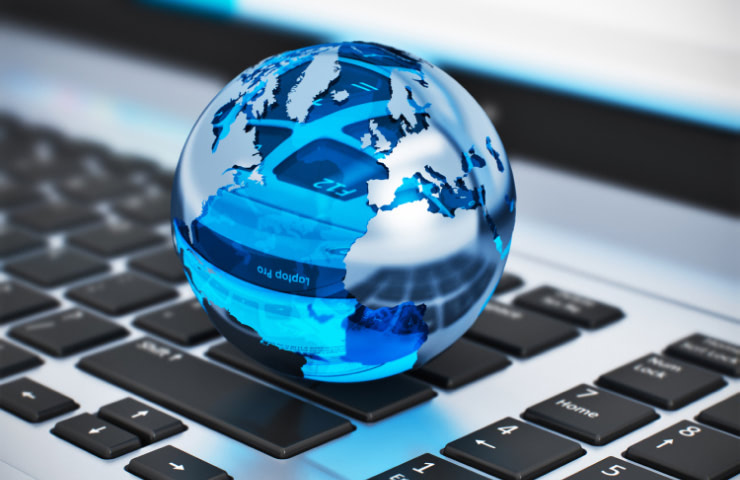Digital diplomacy has become vital to international relations. It’s a top priority for the European Union and other regional powers, transforming statecraft as we know it. But what is digital diplomacy, really? And what does its intersection with technology mean for collaboration, transparency and public engagement? Let’s take a look at the origins and development of this critical yet complex concept.
What is digital diplomacy? Toward a unified definition
As far back as 2016, Shaun Riordan complained that “the debate about diplomacy in the digital age has been recklessly profligate with terminology.” The former British diplomat noted that terms like e-diplomacy, cyber diplomacy and digital diplomacy “have been used almost interchangeably” in the past.
Similarly, in his 2018 paper, The Digitalization of Diplomacy: Toward Clarification of a Fractured Terminology, Dr. Ilan Manor explained why scholars must adopt a clear definition. “For practitioners, definitions help conceptualize how diplomacy should be practiced, what working routines need to be altered and which skills must be acquired,” Manor claims.
Both agree that the lack of common terminology is problematic. The “plurality of terms” doesn’t just result in semantic differences; it could have significant implications for the conduct and practice of diplomacy worldwide.
For example, Riordan argued that the conflation of digital and cyber or online diplomacy muddles the relationship between diplomacy and the digital world. But more importantly, “It tends to conflate two very distinct activities: the use of digital tools to advance diplomatic ends, and the use of diplomatic tools to resolve issues arising in cyberspace.” This leads to communication gaps that fuel fruitless debates and bog down negotiations.
While multiple definitions exist, the most widely accepted focuses on the interplay between technology and diplomacy. It covers internet-driven changes in the diplomatic environment, the addition of new topics such as privacy and cybersecurity to diplomatic agendas, and the use of digital tools in diplomatic practice.
Social media and diplomacy: From the 1960s to the digital era
Nandika Sharma notes that the International Telecommunication Union (ITU) held the first global diplomatic session with online participation in 1963. Another milestone was in 1992 when activists used email and mailing lists for the first time during the Rio de Janeiro Earth Summit. And in 2007, Sweden became the first country to open an online embassy in the virtual world, Second Life.
More recent events like the Arab Spring have grabbed public attention, too. These protests brought home the growing role of social media in grassroots activism and mobilization. The COVID-19 pandemic further changed the face of diplomatic procedures as online and blended summits became more widely accepted.
At the same time, the spread of disinformation and conspiracy theories via social media, as well as online radicalization, are emerging as matters of concern for governments worldwide. This emphasizes the need to recognize and monitor the political risks involved in the unregulated dissemination of online information.
Digital diplomacy in action: An example of the EU
In Europe, digital diplomacy was adopted as a tool to “secure the EU’s global role in the digital world, protect its strategic interests and promote its dynamic, human-centric regulatory framework for an inclusive digital transformation.” The regional bloc has since proposed a set of priority actions ensuring more robust, strategic, coherent and effective EU policy and action in global digital affairs.
Josep Borrell, High Representative of the European Union for Foreign Affairs and Security Policy, later outlined the EU’s role in digital governance:
“The idea that the internet should be the tool of states leads directly to the internet as a tool for control of populations, rather than the source of innovation and free speech that we know today.”

Instead, the EU aims to safeguard and improve the current “multi-stakeholder model of internet governance” that supports human-centric transparency and state-led control.
The interconnected future of international relations: Leveraging tech diplomacy
How can we expect digital diplomacy to evolve as our globalized world becomes increasingly dependent on technology? Ilan Manor speculates that virtual reality could become a tool for cultural diplomacy and drone use for consular aid. Meanwhile, 3D printing could revolutionize foreign aid project delivery as cyber agreements facilitate the cross-border movement of autonomous vehicles.
The United Nations offers more concrete digital diplomacy examples for future applications via the Global Digital Compact. Expected to be adopted at the UN Summit of the Future, it will provide a technological platform enabling governments, international organizations, the private sector, civil society, grassroots organizations, academia and individuals to champion an “open, free and secure digital future for all.”
Master digital diplomacy in international relations
The programs we offer at IE School of Politics, Economics & Global Affairs will keep you on the cutting edge of international relations.






